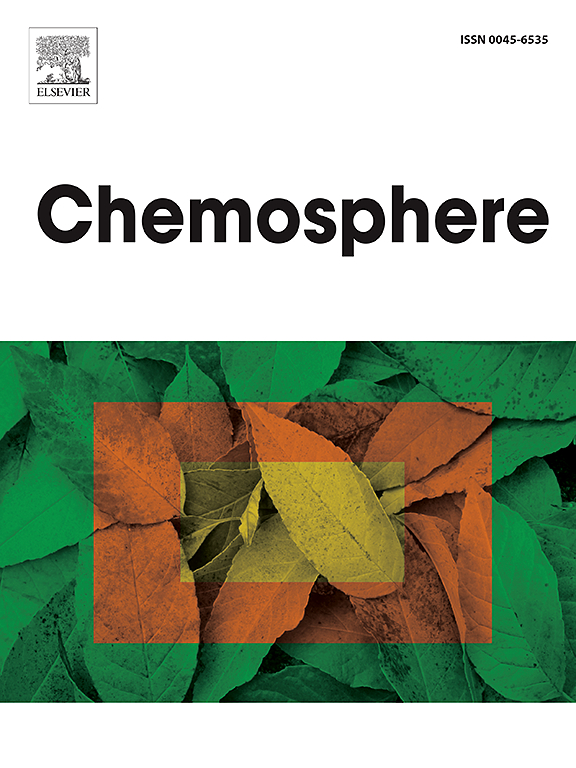北极西部水柱中的微塑料污染:从原始到污染的过渡
IF 8.1
2区 环境科学与生态学
Q1 ENVIRONMENTAL SCIENCES
引用次数: 0
摘要
北冰洋,曾经被认为是一片原始的、未受影响的冰原,现在正面临着微塑料污染日益严重的威胁。本研究提供了北冰洋西部水柱中多聚氰胺污染的定量数据。使用CTD(电导率、温度和深度)玫瑰花状采样器,从9至297 m的深度共收集了324个重复水样。利用微傅里叶变换红外光谱(μ-FTIR)对分离的MPs进行分析。MP的平均丰度为0.06个粒子L−1,其中波弗特海站(BFS 26)的浓度最高,为0.22个粒子L−1。蓝色和纤维性,主要由聚烯烃组成的小MPs (<500 μm)占主导地位。MPs在水柱中的分布为:极地混合层(59%)、太平洋或大西洋盐跃层(22%)和大西洋水中间层(19%)。这项研究为MPs的垂直分布、它们的特征以及MPs涌入该地区的可能来源提供了有价值的见解。本文章由计算机程序翻译,如有差异,请以英文原文为准。

Microplastic contamination in the western Arctic water column: A transition from pristine to polluted
The Arctic Ocean, once regarded as a pristine and untouched icy expanse, now faces an increasing threat from microplastic (MPs, <5 mm) pollution. This study presents quantitative data on MP contamination in the water column of the western Arctic Ocean. A total of 324 replicate water samples were collected using a CTD (Conductivity, Temperature, and Depth) rosette sampler from depths ranging from 9 to 297 m. The isolated MPs were analyzed using micro-Fourier Transform Infrared Spectroscopy (μ-FTIR). The average abundance of MP was 0.06 particles L−1, and the Beaufort Sea station (BFS 26) recorded the highest concentration (0.22 particles L−1). Blue-coloured and fibrous nature, small MPs (<500 μm) primarily composed of polyolefins were dominant. The distribution of MPs in the water column was as follows: Polar Mixed Layer (59 %), Pacific or Atlantic halocline (22 %), and the Intermediate layer of Atlantic water (19 %). This study provides valuable insights into the vertical distribution of MPs, their characteristics, and the probable sources of the influx of MPs into this region.
求助全文
通过发布文献求助,成功后即可免费获取论文全文。
去求助
来源期刊

Chemosphere
环境科学-环境科学
CiteScore
15.80
自引率
8.00%
发文量
4975
审稿时长
3.4 months
期刊介绍:
Chemosphere, being an international multidisciplinary journal, is dedicated to publishing original communications and review articles on chemicals in the environment. The scope covers a wide range of topics, including the identification, quantification, behavior, fate, toxicology, treatment, and remediation of chemicals in the bio-, hydro-, litho-, and atmosphere, ensuring the broad dissemination of research in this field.
 求助内容:
求助内容: 应助结果提醒方式:
应助结果提醒方式:


